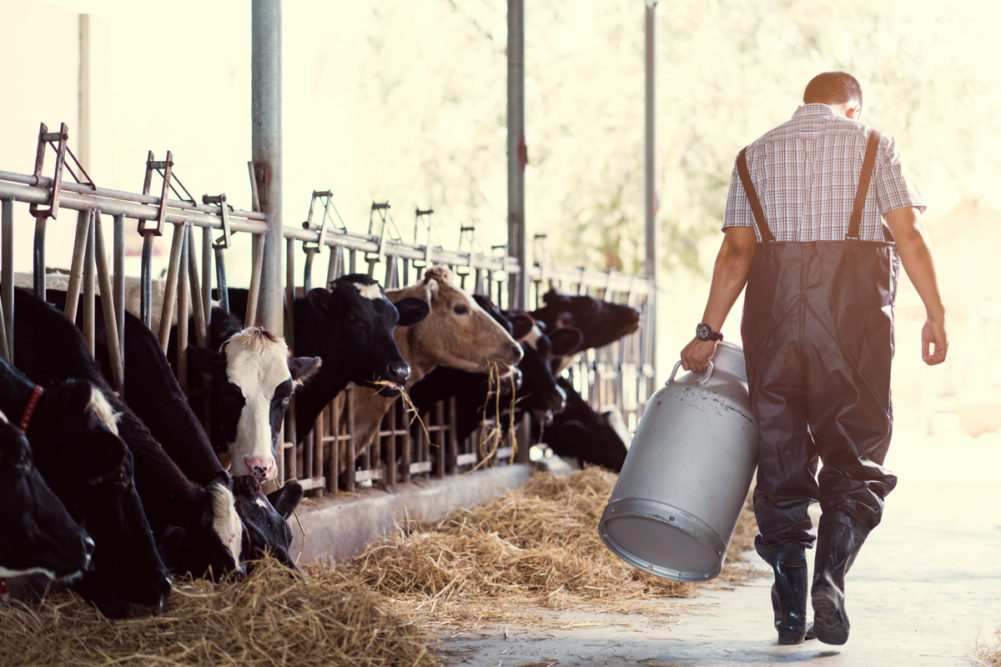KANSAS CITY — While nearly all people and businesses have been touched by the coronavirus, dairy has been one of the more severely impacted ingredient sectors with widespread reports of farmers dumping milk and processors dumping cream as supply outpaces demand mostly as the result of foodservice closings. Prices of milk, along with butter, cheese and most dry products have fallen, some to multi-year lows.
“The COVID-19 pandemic has deeply damaged the nation’s dairy industry and brought financial hardship to producers and processors alike,” Michael Dykes, president and chief executive officer of the International Dairy Foods Association, said on April 23. “As the crisis wears on, the dairy industry expects to lose $5 billion to $10 billion in sales for the remainder of the year. Foodservice closures, a weakened export outlook and challenges within the supply chain have created conditions where the milk supply exceeds demand by at least 10% — a gap that could widen as supply increases to its seasonal peak and ‘shelter-in-place’ conditions endure.”
The government’s $19 billion Coronavirus Food Assistance Program announced April 17 includes $16 billion in direct payments and $3 billion in government food purchases. Dairy’s share was said to be $2.9 billion in direct payments and $100 million per month of milk and dairy product purchases for distribution to food banks and nutrition programs. Pre-coronavirus government food programs will continue. Direct payments were set to begin by the end of May.
Mr. Dykes called the program “an important first step” in bringing much-needed relief to the US dairy industry.
Visual (milk dumping) and price declines have been staggering.
Dairy Farmers of America, the nation’s largest milk producer cooperative, has estimated as much as 8% of US daily milk output was being dumped.
Lucas Fuess, director of dairy market intelligence at HighGround Dairy, Inc., Chicago, in a recent guest column for Cheese Market News, said cheese, butter, nonfat dry milk, Class 3 and Class 4 milk “have each shed significant values,” with only dry whey prices holding constant. He expects milk dumping will be near record levels in April.
Dairy product prices reported by the US Department of Agriculture reflected the pressure from the loss of foodservice business, among other struggles.
The CME Group butter price, trading under $1.15 per lb last week was at an 11-year low. Churning was active as processors sought to keep cream from being dumped.
CME Group cheddar barrel and block prices were trading slightly above $1 per lb, also at multi-year lows. Some processors were forced to curb cheese production as storage space filled. Less cheese production reduced whey outturn, which tended to support dry whey prices.
The USDA said good retail demand for cheese and butter was not enough to offset the loss of sales to foodservice. Though retail butter and cheese sales still were strong, there were indications that consumer buying was beginning to slow. Meanwhile, a slight uptick in sales to restaurants was noted last week as takeout increased and some prepared to reopen, but sales to foodservice overall remained well below normal.
Prices for nonfat dry milk, the most-produced dry dairy product that tends to dictate values for other dry products, as of mid-April were down about 25% to 30% from their February highs and were down about 12% from a year earlier.
The nagging question for dairy and the world is, “When will it all end?” Unfortunately, most agree it won’t be fast.
While Mr. Fuess expects dairy prices are likely to bottom in May, farmers will not see profits for months as buyers are not stepping up to take advantage of low-priced dairy products because demand for their products remains unknown. And he expects demand from foodservice, which is key to dairy, to come back slowly as consumers remain hesitant to eat out or be part of large crowds even after restrictions are eased.




